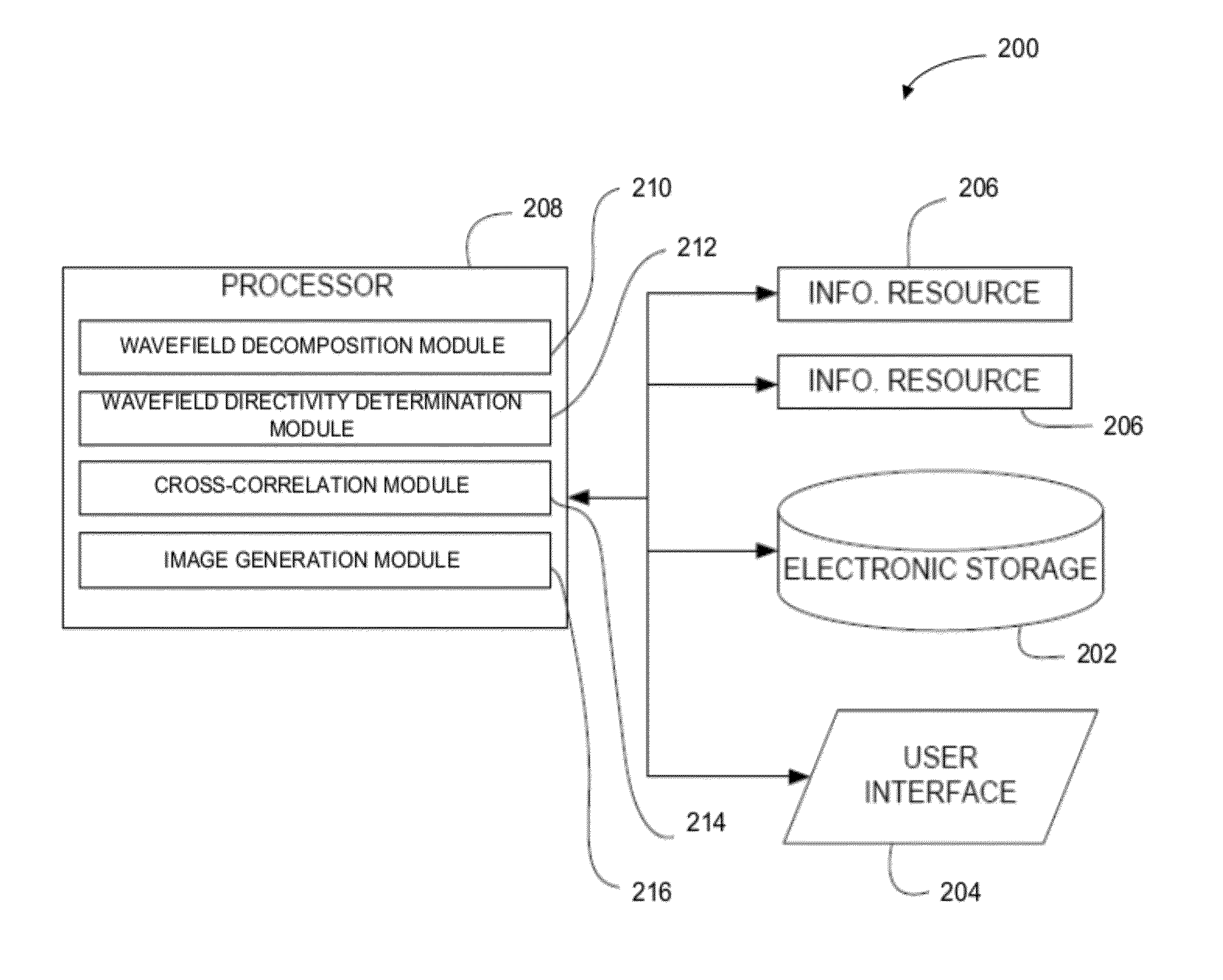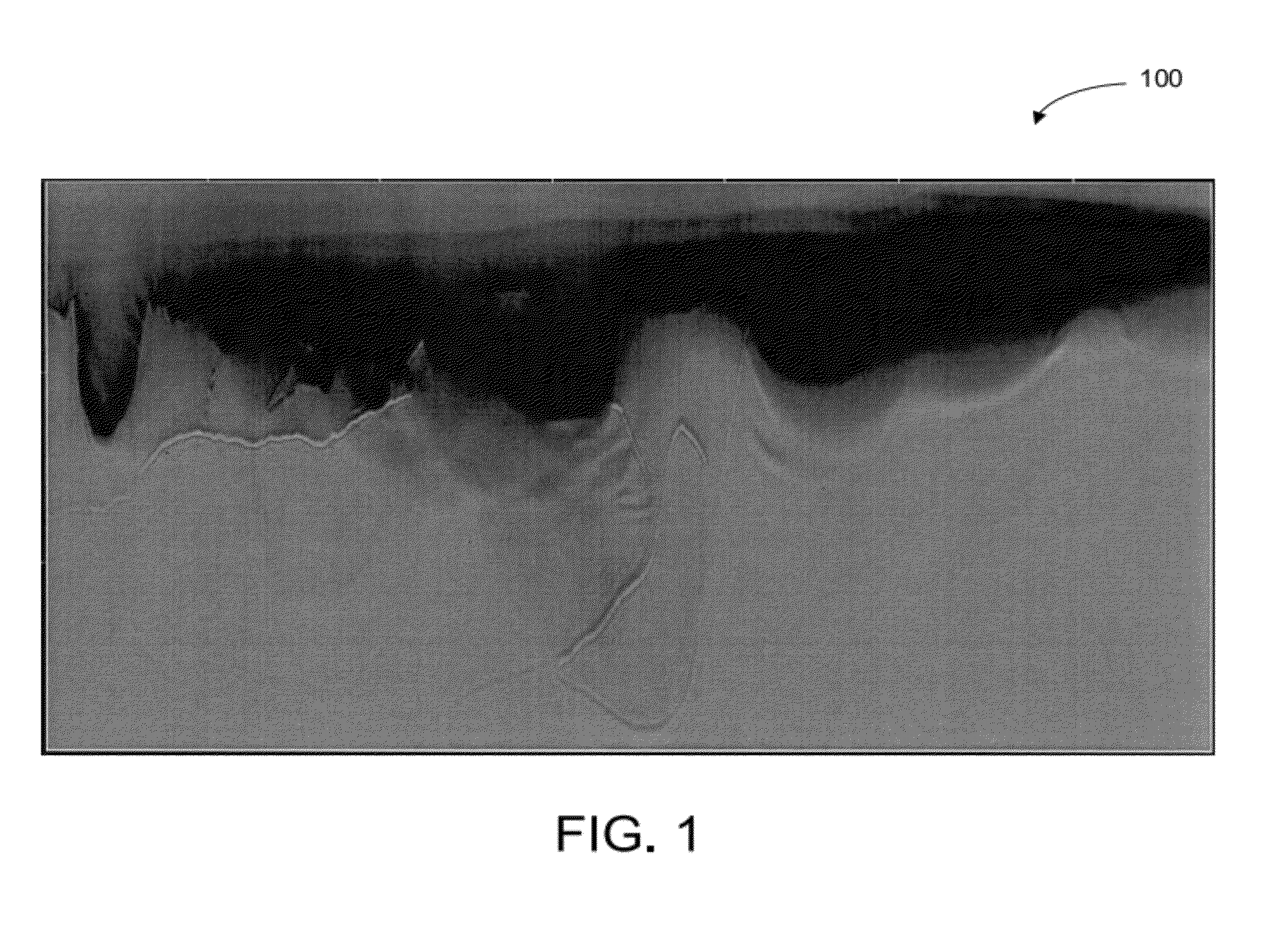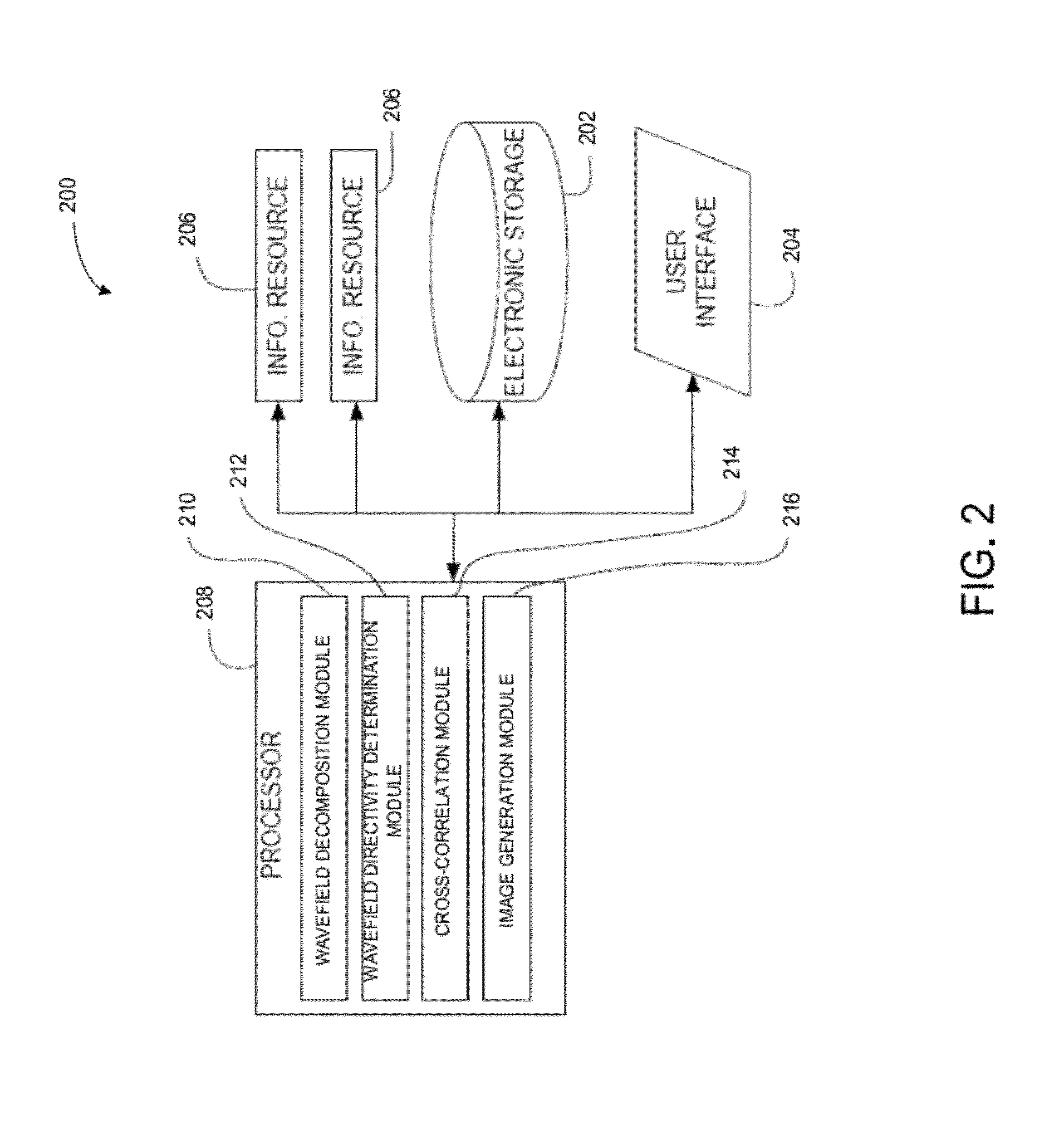Reverse time migration back-scattering noise removal using decomposed wavefield directivity
a wavefield directivity and reverse time migration technology, applied in the field of removing backscattering noise, can solve the problems of blurred parts of an image of a subsurface region, unsatisfactory backscattering noise, and smear structural images
- Summary
- Abstract
- Description
- Claims
- Application Information
AI Technical Summary
Benefits of technology
Problems solved by technology
Method used
Image
Examples
Embodiment Construction
[0014]The present technology may be described and implemented in the general context of a system and computer methods to be executed by a computer. Such computer-executable instructions may include programs, routines, objects, components, data structures, and computer software technologies that can be used to perform particular tasks and process abstract data types. Software implementations of the present technology may be coded in different languages for application in a variety of computing platforms and environments. It will be appreciated that the scope and underlying principles of the present technology are not limited to any particular computer software technology.
[0015]Moreover, those skilled in the art will appreciate that the present technology may be practiced using any one or combination of hardware and software configurations, including but not limited to a system having single and / or multi-processor computer processors system, hand-held devices, programmable consumer el...
PUM
 Login to View More
Login to View More Abstract
Description
Claims
Application Information
 Login to View More
Login to View More - R&D
- Intellectual Property
- Life Sciences
- Materials
- Tech Scout
- Unparalleled Data Quality
- Higher Quality Content
- 60% Fewer Hallucinations
Browse by: Latest US Patents, China's latest patents, Technical Efficacy Thesaurus, Application Domain, Technology Topic, Popular Technical Reports.
© 2025 PatSnap. All rights reserved.Legal|Privacy policy|Modern Slavery Act Transparency Statement|Sitemap|About US| Contact US: help@patsnap.com



